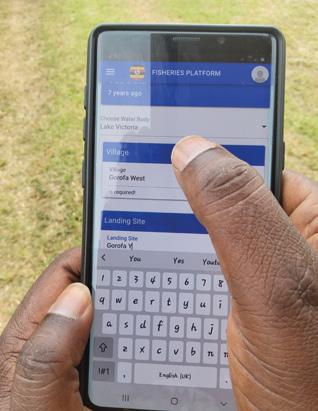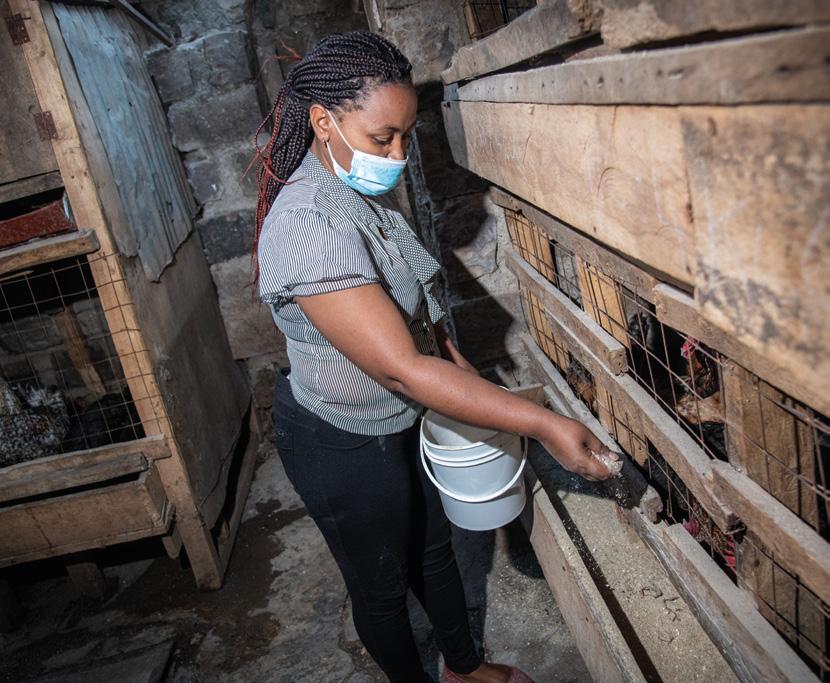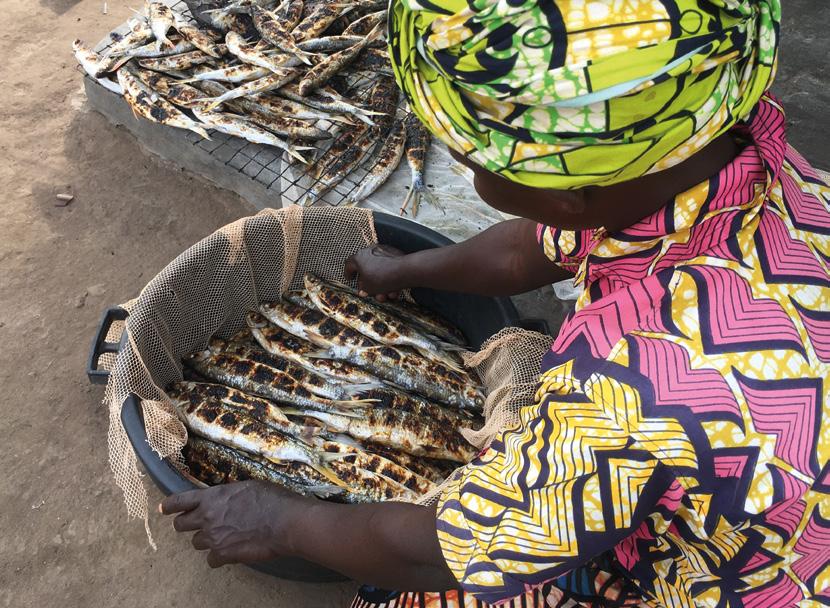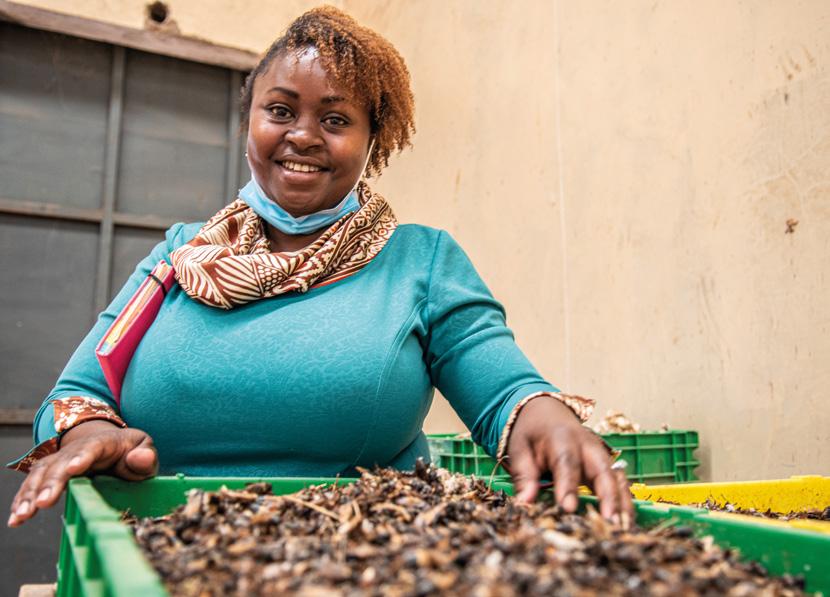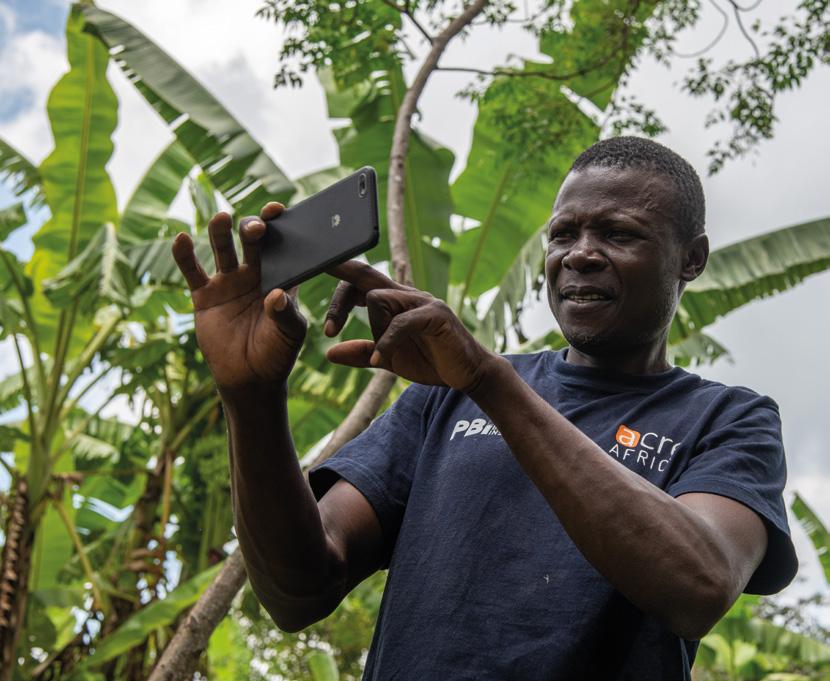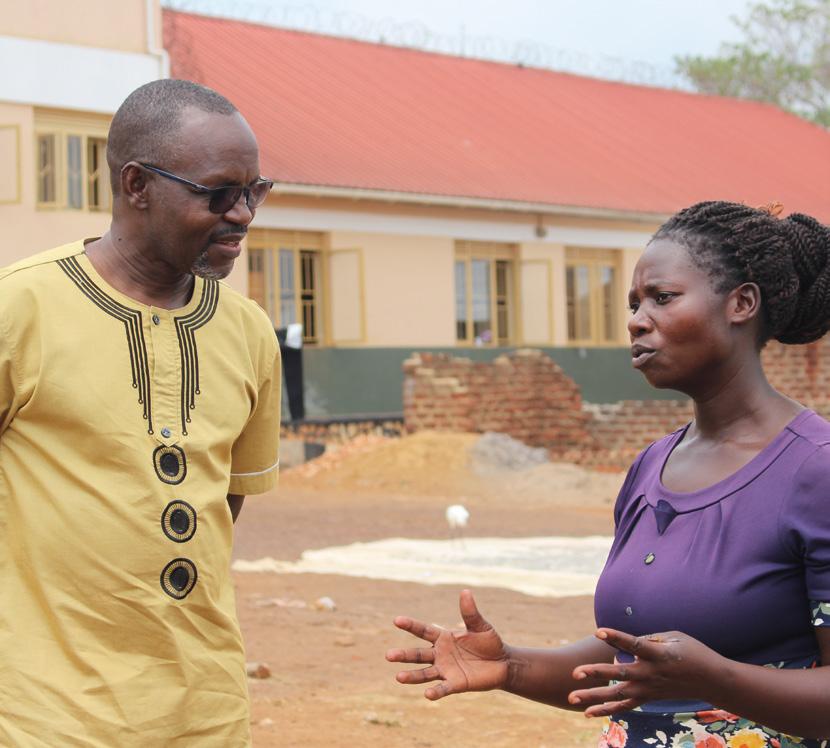Foreword


Research makes a difference to the livelihoods of millions of farmers across Eastern and Southern Africa.
ACIAR and IDRC are committed to supporting research intended to enhance sustainable and resilient agricultural development, and establish equitable and just food systems in developing areas across the globe. Their objectives encompass strengthening research capabilities, advocating for research utilization to alleviate poverty, and attaining gender equality.
In this context, Cultivate Africa’s Future (CultiAF), a 10-year collaborative program between IDRC and ACIAR, was established in 2013 to fund agricultural research in Eastern and Southern Africa. This aligned with IDRC and ACIAR mandates to fund research to inform local, national, and regional decision-making. To accomplish this mandate, the two organizations convened various stakeholders – scientists primarily based in Eastern and Southern Africa, policymakers, civil society actors, the private sector, and regulators – to undertake research to inform policy for food security on the continent.
Food security is a critical priority for both the Australian and Canadian governments. Recognizing the untapped potential of African smallholder farmers to feed the continent, there was considerable scope for research to find effective ways to reduce losses while increasing returns through product quality control, market segmentation, processing, and value addition. Over 10 years, CultiAF’s program evolved with a growing focus on climate, gender, youth, and policy, especially during Phase 2 from 2017 to 2023.
Throughout its 10-year span, the CultiAF program funded 17 research projects on 53 innovations in seven Eastern and Southern African countries, with an investment of CAD 35 million/AUD 37 million. The research cut across questions of reducing post-harvest losses, empowering women, increasing uptake of climate-smart agricultural technologies, improving nutritional outcomes, food quality and safety standards, and public and private sector investments in agribusiness.
This synthesis presents the 10-year journey that IDRC and ACIAR have taken together in the program and the results of that investment. It looks at how strong partnerships can navigate challenges to produce significant accomplishments. It is a comprehensive look at the innovations, the science, what worked, the outcomes, the challenges (including unexpected ones such as the Covid-19 pandemic), the risks, the trade-offs, the partnerships, the recommendations, and the impact that was achieved for the livelihoods of farmers and the communities in which they live.
We are excited to witness the implementation of research that promotes innovative approaches to enhance strategic leadership, influence, and participation of women and youth in Eastern and Southern Africa and beyond. We believe that this synthesis will provide valuable insights and inspire you to incorporate the knowledge into your funding and research programs to achieve stronger, more equitable, and more resilient food systems.
10 Enabling Resilient, Equitable and Sustainable Food Systems
Mr. Santiago Alba-Corral, Director of the Climate-Resilient Food Systems Division, IDRC
Ms. Julianne Biddle, Director of Multilateral Engagement, ACIAR
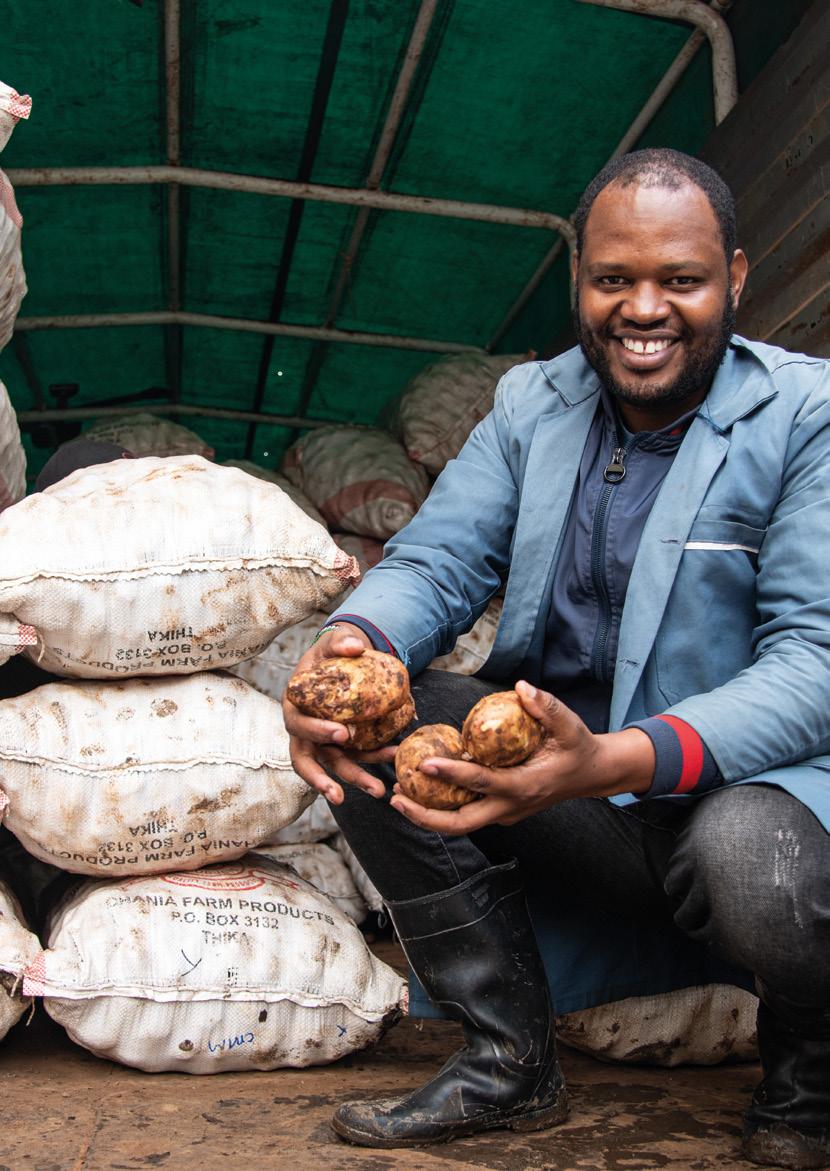 © Georgina Smith
© Georgina Smith
1. Introduction
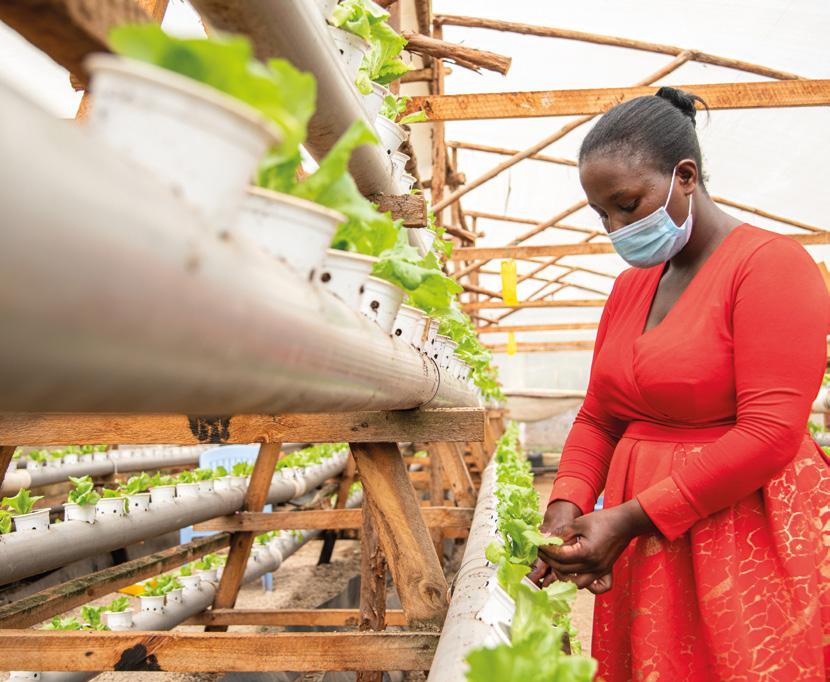
12 Enabling Resilient, Equitable and Sustainable Food Systems
1
© Georgina Smith
Introduction
For 10 years, Cultivate Africa’s Future (CultiAF) –a partnership between Canada’s International Development Research Centre (IDRC) and the Australian Centre for International Agricultural Research (ACIAR) – supported projects to strengthen food and nutrition security across Eastern and Southern Africa. Between 2013 and 2023, CAD 35 million/AUD 37 million was invested into the program.
Agriculture is the primary livelihood activity for over 70% of the rural population in these African regions. Yet, poor performance in the sector has led to reduced economic growth, food insecurity, and malnutrition. CultiAF aimed to help improve food and nutrition security in Eastern and Southern Africa by funding applied research in agricultural development.
Across Ethiopia, Kenya, Malawi, Mozambique, Uganda, Zambia, and Zimbabwe, CultiAF aided in the development and scaling of sustainable, gender-responsive, climate-smart innovations. These enhanced farmers’ resilience and incomes and provided consumers with higher quality and more accessible produce – while simultaneously providing examples and results to inform policy on food safety.
Influencing policy change is crucial to long-term results, so another goal of IDRC and ACIAR’s collaboration was to build partnerships with African governments, private sector actors, and research institutions; encouraging decisionmakers to take steps that will improve the lives of millions. Myriad approaches taken during CultiAF’s decade-long duration aided in achieving this.
Effective communication was critical in establishing and maintaining strong relationships between producers and users of research. While scientific data is vital in obtaining a realistic picture of the challenges and needs of Africa’s smallholder farmers, necessary changes cannot occur if information is not clearly and efficiently used by key stakeholders.
Systematically address and commit to addressing genderbased inequalities.
Believe in the value of southern-led scientific innovation and context-specific solutions to solve development challenges, reduce poverty, and promote growth.
Broaden scope in geographical reach and financial investment, beyond where each institution would have reached alone.
Promote learning of new methodologies and new ways of working between the two institutions.
In total, CultiAF funded 17 different projects, which supported the development and testing of 53 innovations over two phases. Eight projects – comprising 34 innovations – were launched in Phase 1 (2013-2017). Four of these projects continued into Phase 2 (2017-2023), in addition to the launch of five new projects, which together created 19 innovations. Collectively, these projects assisted in managing and reducing post-harvest losses, empowering women, increasing uptake of climate-smart agricultural technologies, improving nutritional outcomes among humans
13 1. Introduction
ACIAR-IDRC partnership
Align the investment priorities of both ACIAR and IDRC.
1
Leverage the strengths, resources, and technical expertise of each organization.
2 3 4 5 6
and livestock, developing food quality and safety standards, and attracting public and private sector investments in agribusinesses.
Climate-smart innovations
Several projects worked to enhance awareness and uptake of climate-smart agricultural technologies. For instance, the Improving Agricultural Productivity and Resilience with Satellite and Cellphone Imagery to Scale ClimateSmart Crop Insurance (Picture Based Insurance) project (Phase 2) encouraged uptake of crop insurance among women farmers – a group typically wary of becoming involved in such schemes. Men and women ‘champion farmers’ took photos of damaged crops in insured fields, which were then uploaded onto a dedicated phone app for processing and review. Through direct involvement with the process, farmers developed greater trust towards insurance –and this was reinforced by the speedier claim assessments and payments afforded by the app. By the end of the project, almost 8,500 farmers had taken out Picture Based Insurance, and around half of those had received a payout.
Other climate-smart innovations worked to increase yields and empower women. In Phase 2, the Climate-smart Interventions for Smallholder Farmers in Ethiopia (Ethiopia Sorghum) project established over 323 demonstration plots (62 of which were women-led) on which to trial alternative varieties of sorghum – including Argity, Fedis, and Melkam. These varieties are early-maturing and drought-tolerant, and provide high biomass for livestock fodder, helping farmers build resilience in the face of climate change-related weather events.
Fish processing technologies
Elsewhere, in Malawi, Uganda and Zambia, three projects – Better Processing and Marketing of Healthy Fish Products in Malawi (Malawi Fisheries)
CULTIAF OBJECTIVES
In Phase 1, the specific objectives of the program were to: a) support innovative research on post-harvest systems, nutrition, and sustainable water use;
b) identify innovations and mechanisms that had the most potential for having success at scale; and c) support and underpin regional agricultural and food security policies and programs.
During Phase 2, the objectives were to:
a) develop sustainable, climate-resilient and gender-responsive innovations for smallholder farmers; b) develop and implement business models that empower women and youth to scale-out innovations that bring equitable benefits to smallholder farmers and consumers; and c) use research results to inform food security, nutrition, climate change, and water policies and programs.
CULTIAF RESEARCH THEMES
Research teams from seven African countries led CultiAF-funded projects (during the two phases) across four broad themes:
Improved productivity and incomes and post-harvest innovations that enhance the quality, quantity, use, and value of agri-food activities.
Improved gender equality.
Research that embraces multidimensional approaches that link agriculture, nutrition, human health, livelihoods, and food supply.
Climate change and sustainable water management.
Enabling Resilient, Equitable and Sustainable Food Systems
14
project (Phase 1-2); Improving Fish Post-harvest Management and Marketing in Malawi and Zambia (Improving Fish Post-harvest Management) project (Phase 1); and Harnessing Dietary Nutrients of UnderUtilized Fish and Fish-Based Products in Uganda (NutriFish) project (Phase 2) – supported women in accessing improved fish processing technologies. These included solar tent dryers and improved smoking kilns: solutions for more hygienic and faster drying of fish. In the Malawi Fisheries project, solar tent drying reduced postharvest fish losses by one-quarter. By using such technologies, the quantity, quality, and shelf-life of produce is also enhanced, allowing for increased market opportunities and incomes for women.
Solar dryers were also used alongside integrated pest management (IPM) techniques by fruit farmers in Malawi, Mozambique, Zambia, and Zimbabwe. The Alien Invasive Fruit Flies in Southern Africa: Implementation of a Sustainable IPM Programme to Combat their Menaces (IPM Fruit Flies) project (Phase 2) provided starter packs – containing traps, lures, bait, and biopesticides – to farmers to help reduce mango crop losses. Over 17,500 farmers (52% men and 48% women) were trained in the use of IPM techniques, leading to an impressive seven out of 10 mangoes being ‘saved’. Further, by using dryers to produce and sell dried rather than fresh mango, farmers boosted the value of their mangoes eight-fold.
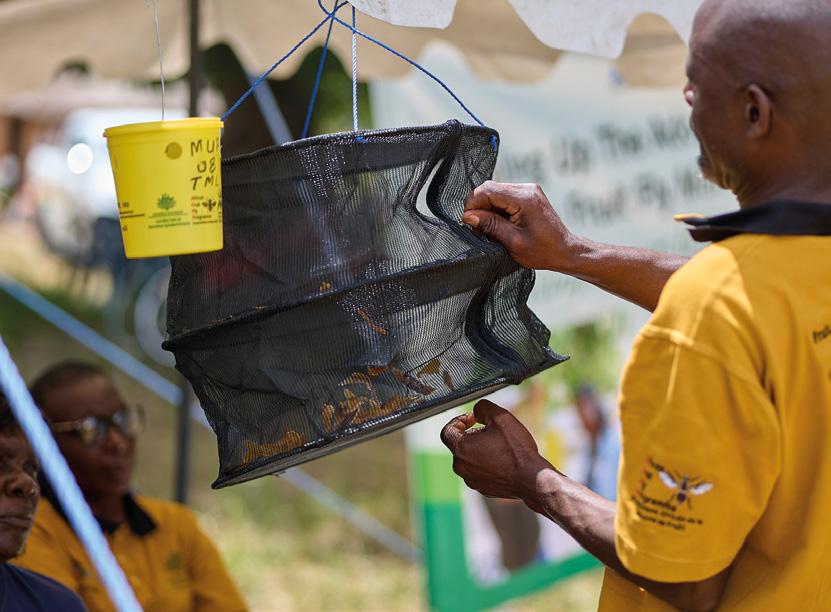
Food storage solutions
New storage solutions were also introduced to increase productivity. For example, the Ethiopia Sorghum project provided farmers with technologies to aid in reducing crop losses in the face of climate change. Over 8,850 sorghum farmers were afforded access to de-hulling machineries to enhance crop quality and reduce processing time. The time required to thresh 0.5 ha of sorghum, for instance, reduced from one day to just four hours. More than 4,400 farmers were also provided with Purdue Improved Crop Storage (PICS) bags, which enable grain to be stored for longer without a reduction in quality – meaning produce can be sold for more money outside of competitive harvest season ‘windows’.
The Post-Harvest Management Technologies for Reducing Aflatoxin Contamination in Maize Grain and Exposure to Humans in Zimbabwe (Aflatoxin) project (Phase 1) also provided farmers with innovative storage solutions. The team worked with farmers to assess the benefits of using hermetic technologies – metal silos and PICS bags – in reducing maize grain
15 1. Introduction
© KB Mpofu Photography
contamination from aflatoxin. Grain stored hermitically sold for almost double compared to grain stored conventionally.
Efficient water use technologies
To improve irrigation on farms, recent technologies were developed by the User Driven Approaches to Make Government and Farmer led Smallholder Irrigation in Mozambique More Productive (Mozambique Irrigation) project (Phase 2). These not only aided in cutting costs but were crucial for sustaining crop production in the face of climate-related challenges. For example, the project introduced farmers to Chameleon water sensors and wetting front detectors, which resulted in water usage being halved and irrigation costs reduced by 40%. In addition, crop yields increased by 10%, which resulted in enhanced incomes and resilience for farmers.
Improved food security
Improving food security was a focal point for the Precooked Beans for Food, Nutrition, and Income in Kenya and Uganda (Precooked Beans) project (Phase 1-2). The initiative involved training farmers to cultivate bio-fortified bean varieties that are not only nutritious but can be quickly processed into precooked beans –saving time and reducing environmental impact (as less water and charcoal are used). Working with partners, the project then developed five products incorporating the bean, including a ready-to-eat snack and noodles. Enhancing
nutritional outcomes through new food products was also key to the NutriFish project, which incorporated nutrient-rich silver fish into products including baby food, sauce, and maize meal. Currently, over 300 street vendors and retailers use and sell the NutriFish sauce.
While the Insect Feed for Poultry and Fish Production (INSFEED) project (Phase 1-2) also worked to enhance food security, its focus was largely on doing so through policy change. Engagement with policymakers saw three new standards developed and approved in Kenya and Uganda, which supported insectbased product development, certification, and commercialization. The project’s success of transforming municipal organic waste into highquality black soldier fly (BSF) frass fertilizer also made policymakers aware of the need to revise existing fertilizer standards. Meanwhile, the Aflatoxin project aided in influencing nationallevel stakeholders, with the Government of Zimbabwe using its findings in the strategy ‘Zimbabwe’s Agenda for Sustainable SocioEconomic Transformation’.
Skills building
Finally, training and skills building was a key aspect of several CultiAF initiatives. The Effectiveness of the Metro Agri-Food Living Lab for Gender Inclusive Youth Entrepreneurship
Enabling Resilient, Equitable and Sustainable Food Systems
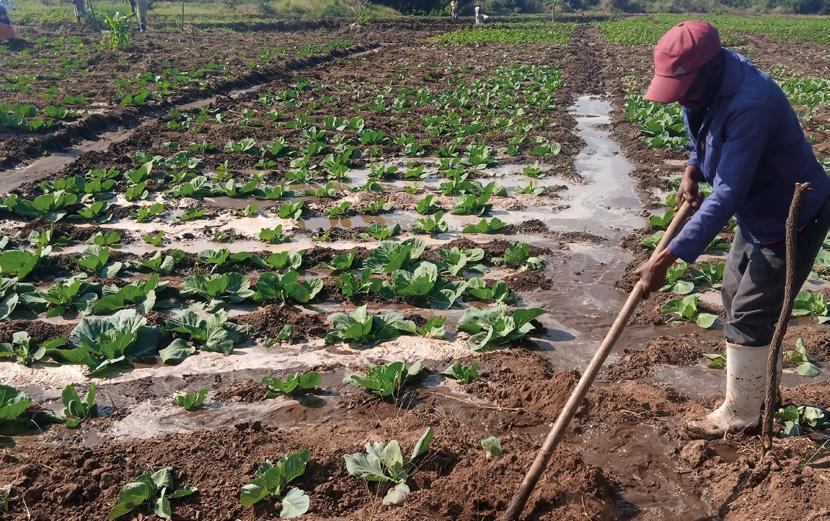
16
© Mozambique Irrigation Project
Development in Kenya (Youth Agripreneurs) project (Phase 1-2) highlighted the importance of training and mentoring youth agripreneurs in digital and financing solutions. Such training is critical in ensuring the long-term success of small businesses, many of which are started by young individuals with few practical skills. The project also found that the training helped to de-risk young people, with banks and credit agencies gaining confidence in the abilities of agripreneurs to pay back loans compared to those who had not received any training. A total of 492 youths were trained on nine topics, including online marketing, value addition, and financial record keeping – leading to their monthly sales increasing by over CAD 100/ AUD 110. Local governments were also engaged to develop agribusiness strategies that could support these new and existing businesses once the project ended.
In Malawi, Zambia, and Zimbabwe, the Expanding Business Opportunities for African Youth in Agri-Value Chains (Youth
Entrepreneurship Hub) project (Phase 1) worked with 68 entrepreneurial youths (particularly women) to build their business and market development skills. Training materials were specifically developed to aid their growth, while project researchers also supported the entrepreneurs in identifying employment opportunities and target markets. During the Communicating Science for Impact: Radio for Reaching Farmers with Research Results (Farm Radio) project (Phase 1), awareness-raising and education activities took place on a much larger scale. Using six radio stations as a dissemination platform, the team used interactive programs to encourage adoption of agricultural innovations – including messages highlighting research and findings related to the INSFEED and Precooked Beans projects. Nine million listeners were reached over two years: with those tuning in subsequently more likely to feed insects to their poultry or fish stock, or increase their level of bean production.

17 1. Introduction
©
Radio International
Jesse Winter/Farm
Inclusive value chains 2
2. Inclusive value chains
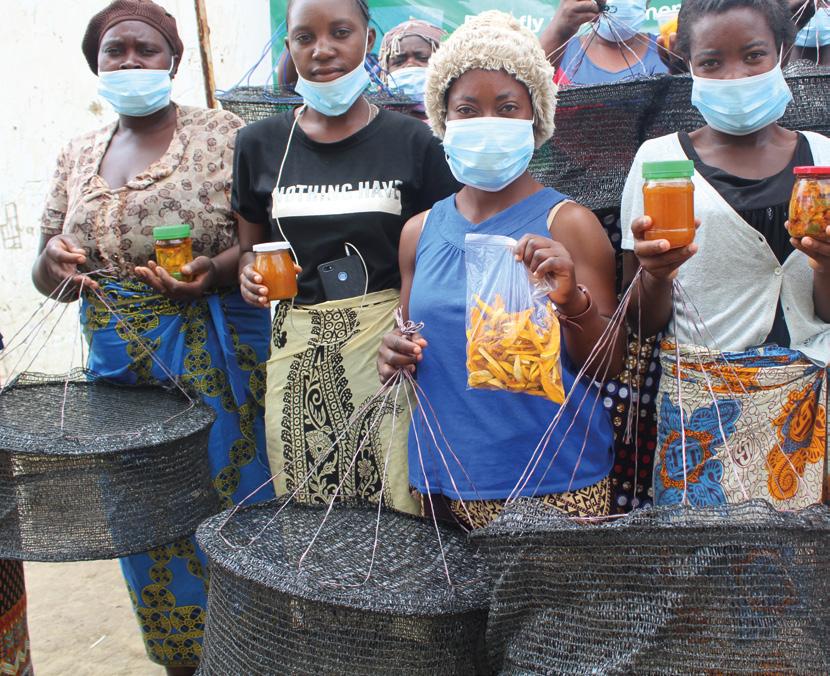
18 Enabling Resilient, Equitable and Sustainable Food Systems
© Friday Phiri
What did CultiAF do?
Food system value chains consist of multiple actors involved in production, processing, marketing, distribution, and consumption. Men, women, and youth participate in value chains in various ways, and some are more disadvantaged than others – through unequal access to land, inputs, capital, markets, nutritious food, or incomes. Inevitably, this inequity leads to more ineffective and inefficient food systems.
The implementation of inclusive approaches within food systems can unlock a myriad of benefits for smallholder farmers and other actors, enabling them to enhance their nutritional diversity, boost their yields and incomes, and improve their livelihoods. In turn, this allows them to access social benefits including education, healthcare, and better housing. A fundamental aim of the CultiAF program was to bring inclusion and equality to the forefront of agricultural research to achieve a food-secure future for Africa’s population. Investing in rural women increases productivity, reduces hunger and malnutrition, and improves rural livelihoods significantly. This is why women’s empowerment and gender-equality was a key focus of the program’s development, and within each of the CultiAF projects implemented across Eastern and Southern Africa.
With the youngest continental population in the world, Africa must maximize the potential of its youth by engaging them in meaningful enterprises. Agriculture provides a good pathway for young people, who tend to be more innovative and better adopters of modern technologies than their older counterparts. However, the conception among youth is that agriculture is old fashioned and unprofitable, thus they often shy away from the sector. Several CultiAF projects focused on engaging youth in agribusinesses that would lead to decent employment, offering reliable incomes and improved livelihoods.
Gender
increased by 20-30%.
KSh10,600, thanks to the agribusiness training and mentorship program.
NutriFish: Savings
of women groups increased by close to 100%
Over 490 new jobs were created through the youth-led enterprises.
Savings of women groups increased by about 100%.
Youth Agripreneurs: 53% of participants in the second phase were women
About 67% of the businesses launched in the program’s rst phase were women-owned, and in the second phase, more than half of the participants (53%) were women.
A critical element of CultiAF’s gendertransformative approach was the use of ‘champions’ in several projects. To ensure greater participation of women in the various value chains, recruiting and training ‘gender champions’ proved critical in sensitizing community members and addressing underlying power inequalities and social norms. A vital aspect of a few projects involved affording women greater control over their income and savings. Another key approach involved providing access to post-harvest technologies to reduce drudgery, improve product quality, and add value for women working in value chains.
To measure women’s empowerment and inclusion, all CultiAF projects carried out proWEAI (project-level Women Empowerment in Agriculture Index) surveys. Initial baseline surveys were conducted early in project implementation, following which the projects made changes to their gender strategies to respond to the factors of disempowerment that arose. For example, within the IPM Fruit Flies project, it became clear that women would have more control over their mango incomes if they were organized into groups. As such, the project set up participatory famer groups in each of the target countries, which enabled women farmers to pool their financial resources to expand their mango production and invest in other income-
19 2. Inclusive value
chains
A gender-transformative approach promotes women’s empowerment, including shared control of resources and decision-making. It unpacks social inequalities, provides space for women, men, and non-binary genders to learn, and engages with people across the socio-economic spectrum to change the norms that enable inequalities. This approach is important because it tackles inequalities in ways that reflect the lived experiences of real people, and it promotes sustainable solutions that address root causes.
Source: https://bit.ly/44xrilL
generating activities, such as pig farming. Final surveys were conducted close to project completion to provide comparative data where empowerment (or disempowerment) had occurred.
Achievements
The Malawi Fisheries project team made the first ever adaption of pro-WEAI to measure the empowerment of women in the fisheries sector: the Women Empowerment in Fisheries Index. With this tool, the project tested the effectiveness of gender transformative approaches in changing norms and perceptions around women’s roles in the fish value chain. For example, Malawi Fisheries selected and trained 36 champions (25 men and 11 women) to sensitize community members on gender issues within the fish value chain. These ‘gender champions’ trained a further 319 individuals (123 men, 196 women) by project end. The gender champions were mainly local leaders and service providers, including chairpersons of beach village committees and village savings and loans associations, as well as chiefs and landing site
EMPOWERING WOMEN FISHERS
As a result of NutriFish support, Busijjo Sophia, a fish seller who trained to become a project champion, now owns her own boat. “After the NutriFish training, we formed a group savings account. I was able to access a loan of USh 1 million [CAD 360/AUD 410] from the group to buy my boat – which employs three men and earned me enough money to repay the loan.” Her example motivated seven other women in her group to also purchase their own boats.
Kimono Magdalene from Kikondo landing site on Lake Victoria used group savings to successfully invest in dairy goat production. “Some of these goats give birth to two or three kids at once. The minimum I can sell one for is USh 150,000 [CAD 55/AUD 62], but bigger ones go for Ush 400,000 [CAD 145/AUD 165]. I have also educated my children, and bought commercial plots and farming land,” she reveals.
fisheries extension officers. Overall, women’s participation in fishing increased from 5% to 75%, while their involvement in decision-making on fish processing and use of income from fish increased by 30% and 49% respectively.
‘Project champions’ trained by the NutriFish team created awareness about the importance of proper drying, fishing, handling, and hygiene throughout the fish value chain. The project started with 68 champions from different fishing communities (including 26 women and youth), and these champions trained another 70 champions.
To further support women and youth groups in the fish trade, NutriFish helped them set up
20
Enabling Resilient, Equitable and Sustainable Food Systems
doubled women’s incomes to CAD 2.6/AUD 3/kg and tripled the shelf-life of dried small fish to almost five months. Smaller solar baskets were also introduced by the IPM Fruit Flies project to women mango farmers in Zambia and Zimbabwe. These dryers significantly boosted incomes by adding value to the product and reducing surplus fruit from going to waste. For example, in Zambia, a basket of fresh mango costs CAD 7/AUD 8, while a basket of dried mango costs CAD 56/AUD 63. Women are also using their new skills to dry vegetables.
In Ethiopia, manual threshing and de-hulling (pounding) of sorghum grain is very time consuming and laborious, and mostly carried out by women and children. Threshing 0.5 ha of sorghum, for example, takes an average

21 2. Inclusive value
chains
gained respect and families are now working together, which has reduced gender-based violence.”
© Farmers Media Ltd
Amanna Bashir, NutriFish project beneficiary
from dehulling, women can now use the grain to achieve higher incomes by making injera – a traditional flatbread typically made with teff, a more expensive grain. However, the project demonstrated that injera quality could be maintained whilst reducing the cost, by substituting 50% sorghum instead of teff.
The Precooked Beans project launched a digital payment system to enable farmers to directly receive earnings from bean sales. Access to income was identified as a disempowering factor for women in Phase 1. In Phase 2, the project had to find the means to channel payment for the supply of beans directly into the hands of women by registering their businesses in their own names and using their own accounts. By the end of the project, almost 18,500 farmers

Challenges
Awareness-raising to change perceptions regarding men and women’s roles was a key intervention in the NutriFish project. Theatrical performances were held in local villages to portray united and successful families, with the savings group members taking up acting roles. As a result, men better supported their wives by, for instance, paying the children’s school fees and participating in the women’s Mukene (small silver fish) processing businesses.
“Significant change has been seen in the communities; domestic violence dropped by 30% and women’s savings increased by up to 100% in some groups. We are also seeing more men and women making decisions together,”
22 Enabling Resilient, Equitable and Sustainable Food Systems
© CIAT/Georgina Smith
says Jackson Efitre, principal investigator of the NutriFish project.
In the first phase of the Youth Agripreneurs project, the team recognized that women –particularly those with young children – were finding it more of a challenge than men to attend city-based training. The project adjusted its activities to decentralize training events and involve village-based mentors who could provide training locally – or at the students’ homes – and childcare facilities were also made available at training venues. This approach provided the opportunity for more women to participate in
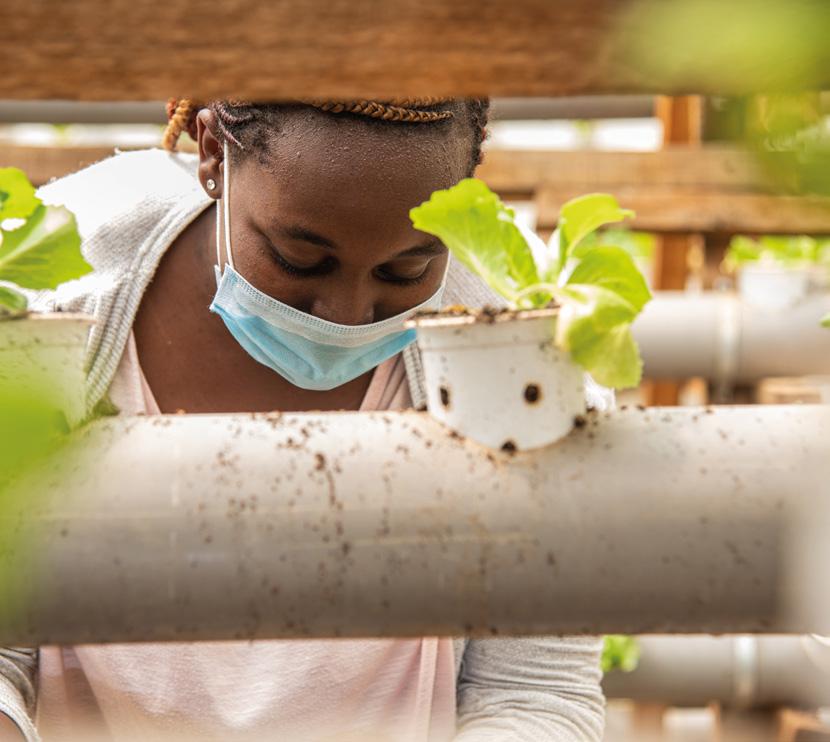
trainings and saw an increase in the number of young women completing the course.
However, in contrast, an unintended consequence of the Precooked Beans project was a rise in gender-based violence – a result of women’s increased control of their income. Further, as women expanded their bean production area to supply the project, this led to increased drudgery on their part.
While the Ethiopia Sorghum project’s threshing machinery significantly reduced women’s drudgery, the machines had to be imported –
23 2. Inclusive value
chains
© Georgina Smith
Although greater women’s empowerment was observed among savings groups that were established by the IPM Fruit Flies project, particularly in Zimbabwe, the team acknowledged that more could have been done to support these groups, by linking them to high value markets and supporting them to achieve product certification.

The implementation of pro-WEAI was acknowledged by all CultiAF projects to be more time-consuming and expensive than expected. Effective implementation also required expertise outside the skillset of most teams, so time was lost in recruiting specialist staff. In the IPM Fruit Flies project, pro-WEAI could only be conducted fully in one of the four target countries (Zambia), as it was too costly – although in Mozambique and Zimbabwe some qualitative data was collected using selected pro-WEAI modules.
technical backstopping to individual youths and youth groups. This strategy enabled beneficiaries to establish their own enterprises and equipped them with the marketing skills to ensure their businesses became successful and sustainable.
Achievements
Four youth groups – with 60 members each –from the Kenyan counties of Bungoma, Kiambu, Nyandarua, and Siaya, were engaged by the INSFEED project in an intensive training course on all aspects of BSF farming. Additional training on business marketing was also provided. As well as producing and selling insect larvae, the youths began leading demonstration farms in each county and accessed an additional income source by providing training to women groups and other youths in the community.
24 Enabling Resilient, Equitable and Sustainable Food Systems
© Georgina Smith
As a result of INSFEED support, over 1,000 new private companies and young entrepreneurs make money from BSF farming. Many of the BSF enterprises are not standalone but linked
TURNING TRASH INTO CASH
A group of 100 Kenyan youth, all in their early 20s, delved into insectrearing to meet the burgeoning demand for alternative protein sources from farmers and companies. On 0.04 ha of land provided by one of the youth’s parents, the group, called Y Minds Connect, rear BSF larvae in 1,500 crates, with each crate accommodating 3 kg of larvae. Y Minds Connect produces 600 kg of BSF faeces (‘frass’) each week, which is sold as fertilizer to horticulture, flower, and organic farmers at CAD 0.92/ AUD 1.04/kg.
“Feeds account for an estimated 70% of the cost of raising livestock, and we have been mesmerized by the potential of BSF to address this challenge. We believe that one man’s waste is another man’s treasure; that is why we have been keen to pursue insect farming. Working on a project at a low cost that helps the community and the environment is profitable and fulfilling,” enthuses 24-year-old Nicholas Mareve, CEO of Y Minds Connect.
to local feed millers, such as Treasure Feeds Ltd, so they have a ready market for their produce. The youth-led businesses have also started diversifying into insect-composted organic (frass) fertilizer, which is used by farmers to improve soil health and crop yields.
Additionally in Kenya, the Youth Agripreneurs project rolled out its course of agribusiness training and mentorship, coupled with links to financing, by recruiting 492 entrepreneurs – up from 60 in its first phase. The trainings increased awareness among youths on various technical
25 2. Inclusive
value chains
“Nurturing young people’s creativity and determination is of paramount importance for the future of Africa. Empowering young people to create innovative, eco-friendly businesses will not only create employment opportunities, but will also contribute to creating responsible leaders.”
Nicholas Ndekei, CEO at Zihanga Ltd, INSFEED project beneficiary
Challenges
A combined approach of training and mentorship proved particularly vital for entrepreneur resilience during Covid-19.
Research from the Youth Agripreneurs project found that this approach facilitated business diversification; more time for the entrepreneurs to network or seek business advice and additional funds; and use of social media to increase sales – all key factors in enabling the businesses to stay afloat. During the pandemic, digital applications such as WhatsApp were used by the project to continue delivering peer-to-peer learning and business mentorship. Affordable internet bundles for participants were also secured by partnering with internet service providers, which allowed young entrepreneurs to venture into online product marketing.
The Youth Agripreneurs project also found that mentorship, which can support youths at an individual level, was more important for
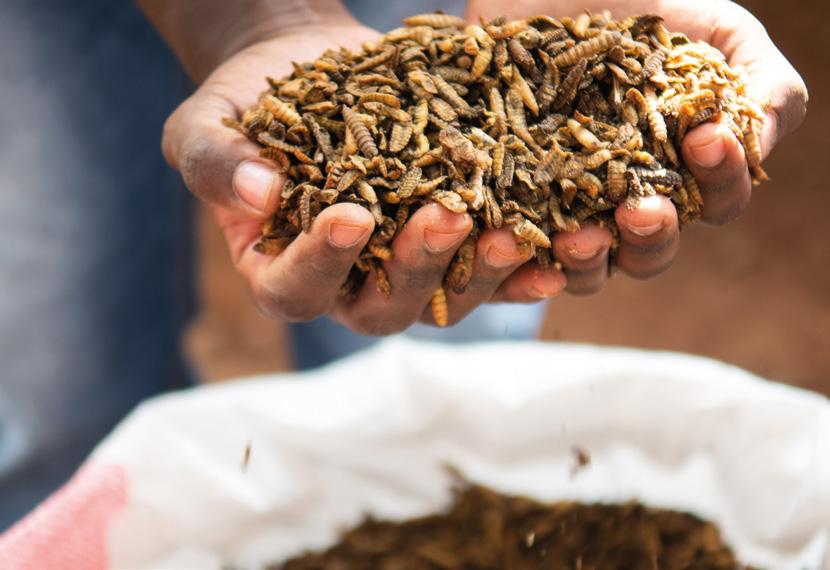
explain that mentors provide critical role models for young people and are well-placed to provide hands-on, practical training – including in financial matters. “We have to prepare young people to access funding and to use it in the right manner,” she adds. Linking youth with financial institutions was a key element of the project to ‘de-risk’ the entrepreneurs (they were able to demonstrate to financial institutions relevant business skills and training), but they needed mentoring in how to borrow money and what was involved.
Conclusions
Whilst there is no doubt that real progress has been made in recent years, food systems are still a long way off being inclusive and equitable. Necessary sex-disaggregated data is still lacking to help policymakers make informed decisions and there are limited financing services to support inclusion. Age-old issues persist with regards to access to resources (including land) and, in most value chains, labour remains a very intensive and time-consuming activity.
26 Enabling Resilient, Equitable and Sustainable Food Systems
© Georgina Smith
Projects must be intentional in their efforts to address gaps faced by distinct groups, and use multi-dimensional approaches – finances, assets, and skills – to engage markets. But it is important to recognize that women, youth, and men are not homogeneous – and, in designing innovations, there needs to be an understanding of who they are, where they are, and what skills they need to unlock their potential.
Inclusion is more than a focus on gender or youth – it is about diversity and responding to people’s needs and abilities. The Youth Agripreneurs project took this into account by establishing a center that provided support to differently-abled students. In addition, they noted the importance of considering the circumstances and needs of vulnerable minority groups, including migrants and refugees, who must also have access to income-earning opportunities.

Women cannot be empowered without men also being involved in any intervention or initiative aimed at enhancing women’s wellbeing. Men need to understand their role in supporting women and it is critical that initiatives take this into account so as not to unintentionally contribute to disempowerment and worsened gender outcomes.
Focusing on gender is not an ‘add-on’. A project must be intentional about gender-transformative approaches and really consider it an integral part of the initiative. Tools used for gender analysis – such as pro-WEAI – must be considered during proposal development because of the cost and skills required in implementing them. You can train technical experts and sensitize them to gender aspects, but to have a truly transformational approach on gender outcomes, sufficient budget is required, as well as personnel with the necessary skills and expertise.
27 2. Inclusive value chains
© Busani Bafana
productivity and resilience
3. Improving productivity and resilience

28 Enabling Resilient, Equitable and Sustainable Food Systems
© CIAT/Neil Palmer
Improving
3
What did CultiAF do?
For too long, productivity has only been considered as production at farm level. However, climate variability, gender biases, and cultural norms, along with a lack of processing and storage facilities, poor infrastructure, and distribution challenges, impact productivity throughout the entire food value chain. CultiAF implemented several innovative approaches and tools to enable better processing, storage, and distribution, while addressing the challenges of climate to deliver food security and better livelihoods for food system actors.
In addition, the CultiAF program ensured greater availability of more nutritious foods. Nutritional deficiencies are widespread across the continent, particularly among women of reproductive age and children under five years. Several CultiAF projects targeted enhanced nutritional security as a key project outcome or pivoted their research during the project timeline to help address local nutritional needs.
In Mozambique, ‘producing more with less’ was the key aim of the Mozambique Irrigation project, as droughts and erratic rainfall contribute to crop losses and food scarcity in a region increasingly vulnerable to climate change. Water-efficient innovations were tested to enhance resilience and increase the productivity, profitability, and sustainability of both government-funded and smallholder farmer-led irrigation schemes in Gaza and Manica provinces.
More prolonged droughts are common in Ethiopia, where the Ethiopia Sorghum project provided game-changing technologies, including improved varieties, processing machinery, and innovative storage solutions, for farmers growing sorghum – a drought-resilient crop.
Crop insurance provides a cushion to farmers at risk from climate-related shocks. However, successful schemes for smallholders are limited due to high implementation costs, low demand, and a lack of other risk management options, such as drought-tolerant cultivars. The innovative
Picture Based Insurance:
9,000 men and women farmers trained on IPM technologies
7,375 farmers have been covered by climate smart insurance.
8,500 farmers were covered by climatesmart insurance
7/10 mangoes saved using IPM technologies
IPM Fruit Flies: 7/10 mangoes saved using IPM technologies
181 champion farmers (58% female) have collected over 60,000 field images.
Mozambique
Dried mango is worth eight times more than fresh mango in Zambia
Three machine learning models help automate image processing.
Water-monitoring tools have cut water used for irrigation by half.
Irrigation:
Around 400 street vendors and retailers are using and selling NutriFish sauce.
Water-monitoring tools cut water used for irrigation by half
NutriFish:
Consumption of Mukene has increased by 20-30%.
Irrigation costs have dropped by 40% for farmers using pumps for irrigation.
Consumption of Mukene increased by 20-30%
Crop yields have increased by 10%.
Savings of women groups increased by about 100%.
Ethiopia Sorghum: 8,846 sorghum farmers reached with climate-smart technologies
7,500 sorghum farmers reached with climate-smart technologies
Picture Based Insurance project in Kenya worked to address these challenges and build trust in insurance among farmers by working with champion farmers to take photos of farmers’ crops at different growing stages, which were used by insurance companies to determine if conditions warranted a payout.
Threshing time for half a hectare of sorghum grain has reduced from 1 day to 1 hour
In Southern Africa, insect infestations hamper mango productivity and curtail export opportunities, with 80% of crop lost to fruit flies.
Increased sorghum yields from 2.7 to 4.2 tonnes/ha
29
3. Improving productivity and resilience
With global warming, such pest infestations are likely to increase. However, a bundle of IPM techniques promoted by the IPM Fruit Flies project resulted in a reduction in fruit fly damage, which led to increased farmers’ yields and incomes in four countries.
In Uganda, limited access to animal protein and micronutrient-rich foods has contributed to national nutritional deficiencies. The country consumes half the recommended amount of fish, even though small pelagic fish, which are highly nutritious, are abundant in local lakes. To increase fish consumption and boost nutrition security, Nutreal – a local processing company and partner of the NutriFish project – developed five high-value Mukene (small silver fish)-based nutritious products: baby food, sauce, maize meal, snacks, and seasoning.
In Kenya and Uganda, beans are an important source of protein, especially for low- and middleincome households, but consumption is limited by the high energy and water requirements for cooking beans, which takes 2-3 hours. To increase bean consumption and enhance the nutritional quality of bean varieties, the Precooked Beans project developed a range of innovative bean products.
Achievements
Through adopting water-monitoring tools promoted by the Mozambique Irrigation project, farmers cut water used for irrigation by half, reduced irrigation pumping costs by 40%, and increased crop yields by 10% in two consecutive seasons (2020 and 2021). Benefiting at least 40% women-owned/managed farms, a key innovation was the hand-held Chameleon soil water sensor, which displays a colour code according to the level of moisture in the soil. The inclusive sensors are easily interpreted, including by those who cannot read (blue: soil is wet; green: sufficient moisture; and red: soil is dry and time to irrigate).
With increased food productivity, farmers are afforded a surplus which can be sold. Money from this may be used to buy other goods or
PRODUCING MORE WITH LESS
Esmeraldo Julio Ngovene, head of production at the Makateco Irrigation Scheme, says that before being introduced to the water-saving technologies, farmers irrigated on a hunch. Previously, over a three-month cropping season, farmers used 90 liters of diesel to pump water to grow beans on 2 ha of land.
Since adopting the devices, Ngovene explains that they pump water based on the water monitoring tool readings, and now use only 50 liters of fuel on the same area. This has cut irrigation costs by half – from CAD 194/AUD 220 to CAD 100/AUD 112 for the entire crop cycle.
30
Enabling Resilient, Equitable and Sustainable Food Systems
“Insurance is not an investment, it is a shock absorber. Climate change is real and needs to be taken seriously.”
Wycliffe Mwake, Picture Based Insurance project beneficiary
invest in other economic activities, such as growing fruit trees, cultivating rain-fed crops, and fishing, to provide greater resilience and enable them to withstand or recover from future climate-related shocks. With enhanced crop yields, farmers were also encouraged to take a more market-oriented approach to their production – including diversification to attract higher prices. As a result, beans were grown during the dry season when most farmers grow vegetable crops, whilst others grew additional vegetable crops, such as tomatoes, to increase incomes. Maria Alexandre Sitoe, president of the Rivoningo Irrigation Scheme in Gaza Province, says that diversifying into tomatoes provided her additional earnings of CAD 447/AUD 505, which she invested in building her house and educating her children.
The Mozambique Irrigation project also found that taking farmers on exchange visits allowed them to learn from one another. As a result, they were more inclined to adopt mixed cropping – including growing fruit trees around the perimeters of their fields, which is a risk mitigation strategy providing enhanced resilience.

In Ethiopia, demonstrations for early maturing, drought tolerant sorghum varieties were also used to train farmers on crop, water and soil management techniques to obtain optimum yields. After adopting these varieties along with improved management practices, yields significantly increased from 2.7 tonnes/ha up to a peak of 4.8 tonnes/ha. In conjunction with the EIAR, the project also provided threshing technologies to over 8,850 farmers, which reduced post-harvest losses by around 30%.
The introduction of three-layered PICS bags, which prevent oxygen from degrading the sorghum grain, also made a significant difference to Ethiopian farmers by enabling them to store grain for up to six months without compromising quality. Farmers were able to sell their crops at higher prices later on, rather than selling immediately after harvest when there is a surfeit of grain and prices are low.
PICS bags were also successfully implemented to reduce post-harvest losses as part of the Phase 1 Aflatoxins project. In Zimbabwe, for instance, PICS bags effectively slowed the accumulation of aflatoxin B1 – the toxin produced as a result of fungal contamination
31
3. Improving productivity and resilience
© Busani Bafana
– in maize grain. Evaluation of the post-harvest grain demonstrated significantly lower levels of damage and losses reported by farmers, which resulted in higher incomes.
In Kenya, the Picture Based Insurance project provided crop insurance to 8,500 farmers (65% women) and 3,672 received a payout. For an acre of land, insurance cover worth CAD 1.84/AUD 2.08 provided a payout of up to CAD 18.47/AUD 20.85 in the event of weather-related crop loss, which helped farmers recover the initial investment paid to buy seed. The project also evidenced that farmers are willing to pay a higher insurance premium if it is bundled with advisory services and access to high quality certified seeds, and if payouts are made directly into mobile money accounts.

In Malawi, Mozambique, Zambia, and Zimbabwe, over 9,300 men and 8,272 (48%) women were trained in IPM technologies by the IPM Fruit Flies project, and provided with starter packs
containing traps, lures, bait, and biopesticide to kill the fruit flies. As a result, 70% of mangoes grown were saved, when previously 80% were lost to fruit flies in the region. This has boosted incomes and household nutrition and enabled families to send their children to school. The reduction in fruit flies also improved the production of other fruit (papaya and passion fruit) and vegetable crops (squash, pumpkin, and butternut) impacted by fruit flies.
One of the five nutritious products developed by the NutriFish project was a fish sauce, which is quick to cook – thereby saving low-income families’ time and energy resources. The project’s baby food was also affordable and convenient for mothers, packaged in 50 g sachets for hygiene and affordability. By the end of the project, the products were sold in five supermarkets in Kampala, and the baby food was available to mothers attending antenatal classes and routine child immunizations in five health facilities. Thanks to the project’s efforts, there
32 Enabling Resilient, Equitable and Sustainable Food Systems
© Ethiopia Sorghum Project
was a 30% increase in consumption of Mukene, which contains micronutrients like iron, zinc and calcium.
In Phase 1, the Precooked Beans project developed a fast-cooking, iron- and zinc-fortified bean product. The pre-cooked bean product reduced the required cooking time for beans to just 10 minutes, which led to high popularity and uptake among consumers. In Phase 2, the project created more innovative bean-based products, including a quick cooking bean, a ready-to-eat bean snack bar, quick cooking bean flour, bean noodles, and bean ‘chunks’ (an ingredient in making bread). These products were promoted to other businesses, such as supermarkets, hotels, restaurants, roadside kiosks, and food vendors, to make them more available to consumers.
Challenges
In several projects (e.g. Mozambique Irrigation and IPM Fruit Flies), a key aspect involved taking a value chain approach and connecting farmers to markets. However, this approach took time and proved more challenging than was perhaps expected. Improving and maintaining the quality of produce, and finding accessible markets for farmers, were two of the biggest challenges that needed to be overcome. Assumptions made by the projects also created some challenges and unexpected outcomes. For example, the Ethiopia Sorghum team planned to promote the improved high-yielding and drought-tolerant variety Argity. However, the team found that the variety did not suit degraded soils. For Argity to perform well, farmers needed to implement soil moisture conservation practices and cultivate in areas where the soil had good water-holding capacity. Farmers also wanted higher biomass than Argity provided. Another improved variety, Melkam, was preferred by farmers and taken up by local seed companies.
Another challenge encountered by many of the projects was ensuring sustainable supply of materials used in project technologies. In the Mozambique Irrigation project, for example, the Chameleon sensor had to be imported from South Africa. Meanwhile, the IPM Fruit Flies project found that, although the materials used in IPM technologies were available, they were only imported for large-scale farmers and were unaffordable for smallholders.
A key innovation of the Picture Based Insurance project was its use of photos taken by farmers to show crop damage caused by extreme weather conditions. Over 60,000 photos were submitted by farmers, and these were manually analyzed by agronomists to assess damage. This manual process led to a delay in payouts, with farmers receiving their money an average of five months after the end of the season. To counter this, the project developed three machine learning models to try to automate the classification of growth states, types of damage, and extent of damage, based on maize images. More work
33 3.
Improving productivity and resilience
“These small fish have a lot of nutrients. I save money buying affordable silver fish, and my children are healthier now that they eat it every day.”
Musa Odwoka, NutriFish project beneficiary
demonstrations. More than 12 million listeners were reached by the radio campaign to promote the value addition and consumption of Mukene –a significant step in tackling long-standing social beliefs that Mukene is a food only eaten by poor families or animals.
Conclusions
The projects found that they needed to work with the private sector and financial service providers to ensure that beneficiaries could access and afford the promoted technologies and innovations. For instance, service-based provision – where private companies rent machinery to individual farmers – is one way to reach farmers who cannot afford to purchase technologies. This approach of engaging the private sector therefore needs to be considered within project proposals
through enhanced demand for innovations. The IPM Fruit Flies project asserted that areawide implementation of IPM was required to create sufficient demand for local agridealers to consider supplying the necessary equipment at regional and national markets. However, country-wide project implementation is challenging and usually only selected areas within a country are targeted.
To achieve scalability and sustainability of insurance products, loss assessments need to become automated. Whilst there is an obvious cost associated with the development of such technology, it is important to reduce the time needed to assess high numbers of farmers –thus settling claims quickly, improving trust in insurance, and driving uptake.

34 Enabling Resilient, Equitable and Sustainable Food Systems
© Georgina Smith
To demonstrate the impact of weather insurance schemes and further increase uptake, insurance projects need more time to account for the farmers taking up the product, experiencing weather-related crop damage, and finally, receiving a pay-out for their claim. This process can take several years and must be considered in the drafting of project proposals.
With increasingly erratic weather events on the rise, the development of climate-resilient technologies, such as drought-tolerant seed varieties, is critical to ensuring farmer’s livelihoods. However, these technologies must be locally tested for their suitability. The Ethiopia
Sorghum project found the variety they had intended to promote did not suit the local soil type, and further breeding and improvement was required for it to thrive. Other lessons around climate-resilient technologies can be taken from the Malawi Fisheries project –which implemented solar dyers for the local communities to enhance their fish processing livelihoods but were washed away during the recent cyclones and floods. In the future, technologies should be designed with this context in mind, and environmental risks must be thoroughly assessed so that mitigation measures can be integrated from the outset.

35
© KB Mpofu Photography
3. Improving productivity and resilience
4
Partnering with the private sector
4. Partnering with the private sector

36 Enabling Resilient, Equitable and Sustainable Food Systems
© Georgina Smith
What did CultiAF do?
In the second phase of CultiAF, four first phase projects were supported as ‘scaling projects’ to increase the coverage and impacts of their initial achievements. In three of these scaling projects, private sector partners played a key role in achieving scaling ambitions and ensuring sustainability.
A public-private partnerships approach engaged over 20 partners during the second phase of the Precooked Beans project in Kenya and Uganda. Partners included national research organizations in Kenya and Uganda, a CGIAR center, two private sector companies, farmer organizations, seed companies, aggregators, and finance and digital service institutions, among others. The private sector was particularly critical in using the research evidence to expand from one to five processed bean products, scale from one to six established processors during the second phase, and reach more consumers.
The Malawi Fisheries project established an innovative partnership with FDH Bank Limited, a private commercial bank, to develop a new, innovative, and appropriate financial product for fish processors, which did not require significant collateral. This was a vital component identified during CultiAF-1, which allowed a greater number of fish processors to invest in improved fish processing technologies, and benefit from access to new markets that were protected by standards developed during the project (see chapters on finance and policy for more information). In addition, a partnership was formed with the People’s Trading Centre (PTC), a supermarket retailer with over 80 shops across Malawi and linkages to other market chains in Southern Africa, to provide a market outlet for the processed fish.
In Kenya, the private sector was the driving force in scaling the INSFEED project, and private actors – particularly young enterprising entrepreneurs – benefited from various aspects of the initiative. For example, the youth-led social enterprise SAFI Organics Ltd used the
Precooked Beans: 20 partners were engaged to scale out benefits
20 partners were engaged to scale out benefits.
developed and approved in Kenya, Uganda and Rwanda. Farmers can generate up to 232% higher profits if they switch from using commercial organic to frass fertilizer.
INSFEED:
Over 1,000 new youthand women-based insect enterprises are making money from BSF farming in Eastern Africa
Over 1,000 new private companies and young entrepreneurs are making money from BSF farming in East Africa.
Female bean farmers increased their income by 70%.
knowledge generated by INSFEED researchers to produce and sell government-certified insect-composted organic (frass) fertilizer to farmers; whilst individual insect farmers and feed millers were key to insect production and feed processing.
19,094 farmers were registered on the project’s digital payment system.
During the second phase of CultiAF, a private sector company – Agriculture and Climate Risk Enterprise (ACRE Africa) – was the lead partner in the Picture Based Insurance initiative in Kenya. ACRE Africa was responding to an identified need and believed the business case existed –even if the evidence to prove it was unavailable. Using satellite and smartphone imagery, the Picture Based Insurance scheme addressed the discrepancies between insurance pay-outs and actual farmer losses, and ultimately, poor trust in insurers among farmers. To deliver the project, ACRE Africa worked with a diverse range of insurance value chain stakeholders, including farmer groups, seed producers, input suppliers, insurance companies, and microfinance institutions.
Achievements
During its first phase, the Precooked Beans project collaborated with one processor to develop two products: precooked beans and a bean snack. To scale-up their product range and further penetrate the market in the
37
4. Partnering with the private sector
second phase, the project collaborated with six processors, which led to the expansion of grain production into 15 new districts across the two countries. Lasting Solutions and Smart Logistics, the original private sector collaborators during the first phase, were particularly instrumental in adding value to the beans, as they purchased the grain, tested the products with consumers, and went on to supply supermarkets, kiosks, restaurants, and other informal food outlets.
Recognizing the potential of rearing insects, such as BSF, as a protein source, private actors advised the INSFEED project on product diversification and played a key role in refining and optimizing these products. For example, over 53 insectbased livestock and fish feed formulations and 10 prototypes of insect-composted organic fertilizer products (i.e., granulated, powder, and liquid-based organic fertilizers) were developed.
As the lead partner in the Picture Based Insurance project, ACRE Africa brought in key expertise around insurance operations, and had contacts with insurers which supported and underwrote this innovation. Other partners included the Kenya Agricultural and Livestock Research Organization, which afforded the innovation credibility, and led to quick market acceptance and facilitation of partnerships with relevant government bodies. Expertise from two international research partners – International Food Policy Research Institute and Wageningen University & Research – enabled the viability of the innovation to be tested. Over 8,500 farmers (65% women) were involved in the CultiAFfunded initiative and, over four seasons, 3,672 were eligible for a payout.
Challenges
The public-private partners of the Precooked Beans project worked well together as a consortium. Each institution and private entity had a sense of ‘buy in’ and came together to effectively discuss issues, overcome problems, and minimize risks. This dynamic partnership, coupled with a strong belief in the products, enabled the consortium to move ahead quickly
COUNTING THE COST –AND THE BENEFITS
Elizabeth Musembi, a 43-yearold mother of three children from Machakos County, enrolled with the Picture Based Insurance project after engaging with a champion farmer. She signed up prior to the 2021 rainy season, paying a premium of CAD 2.63/ AUD 2.97. Farmers were hit by drought during this season, losing most of their crops. Fortunately for Elizabeth, she was able to claim CAD 19.75/AUD 22.32 in compensation through the scheme – enough to buy three bags of seed to plant for the next season, which she would not have been able to afford without the insurance.
and achieve project objectives. In addition, through its research in phase one, the Precooked Beans project demonstrated consumer willingness to pay for the bean products. This proved a crucial step, enabling the project to present a strong business case to engage private actors and indicate the potential returns.
Nevertheless, the Precooked Beans team acknowledged it is critical to challenge assumptions made in a project proposal. For instance, the team assumed they would be able to access a consistent and reliable bean supply in Kenya once a market for the products had been established – but, in reality, supply was limited. Additional efforts had to be made to raise production levels, but the team had not planned to invest in developing the supply chain and sourcing different bean varieties to meet demand. On the other hand, in Uganda, the farmers provided a greater supply than expected – but Covid-19-related border closures made it difficult to transport and access this.
38 Enabling Resilient,
Equitable and Sustainable Food Systems
The relationship with private sector actors was not as cohesive for the Malawi Fisheries project – particularly as the banks had different objectives and perspectives regarding development outcomes. A key issue at the start of the second phase was that the point of contact at the bank was very commercially oriented and had no background in agriculture or development. Meanwhile, senior bank personnel with relevant experience had little time to engage with the project, and these factors led to delays in the implementation of the financial component. Further into the project, a more suitable contact with an agribusiness background was assigned to the project by the commercial bank. The contact person had a better understanding of the fisheries sector, and this accelerated the rolling out of the project to a point where loans could be disbursed.
The Malawi Fisheries team also faced challenges working with PTC, as the supermarket retailer paid the small fish processors at least four weeks after delivery of their products. This approach did not suit small processors, who needed the money immediately to continue their business. To overcome this challenge, the project introduced an off-taker to act as an intermediary who could wait for some time for PTC to make
payments. This scenario demonstrated the importance of striking a balance with private sector involvement, as private company practices and procedures are often mismatched with the needs of small businesses to sustain their activities.
The INSFEED project resulted in the establishment of many insect-producing small- and medium-sized enterprises (SMEs), which initially engaged positively with the team. However, once the SMEs started making good incomes, many implemented a ‘closed door policy’ to protect their product from other farmers. As the INSFEED technologies were produced as a public good, the project team had hoped SMEs would share successes with other famers to help scale-up insect farming and the production of related products. To overcome these challenges in Phase 2, the project supported the decentralization and establishment of more commercial pilot production facilities with open-minded farmers, which reduced the necessity of exchange visits
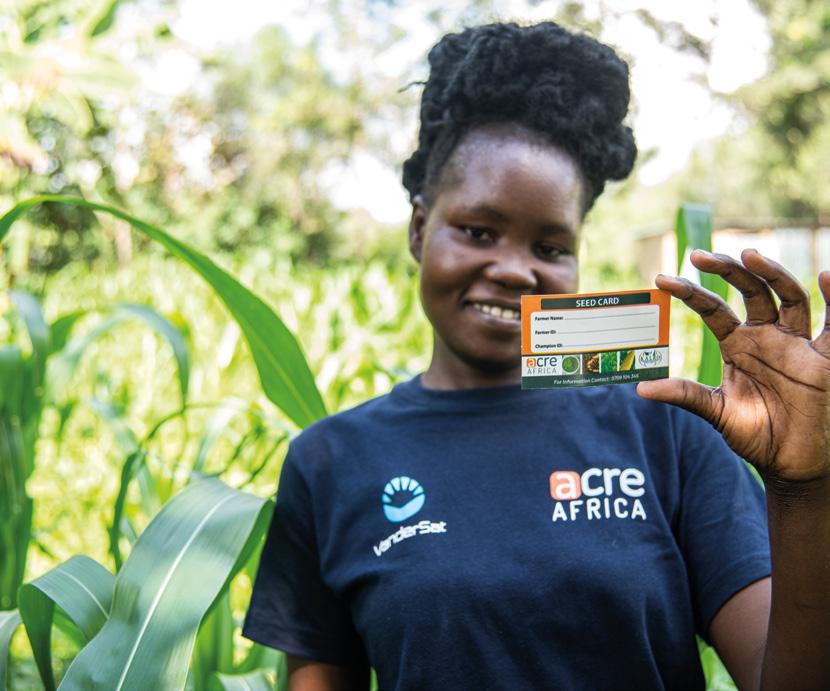
39 4.
Partnering with the private sector
© Georgina Smith
to large-scale enterprises or SMEs with a ‘closed door policy’. The project also provided newlyestablished SMEs with guidance and technical backstopping to optimize their businesses, and to help break down the resistance of knowledge sharing. However, overall, extensive engagement with the private sector and continuous education on the need to work together, as well as the establishment of knowledge-sharing networks, led to new opportunities and highlighted that the enthusiasm of private sector partners serves as a key driver of scaling insect-based farming technologies.
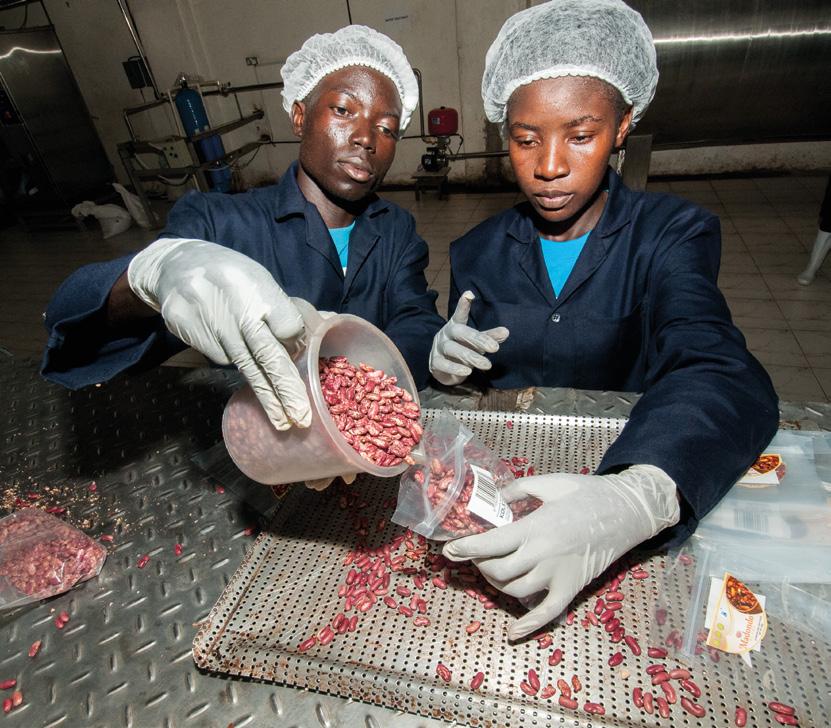
40 Enabling Resilient, Equitable and Sustainable Food Systems
“Involving the private sector is self-sustaining.”
©
Levison Chiwaula, principal investigator, Malawi Fisheries project
CIAT/Georgina Smith
Unlike the other projects, the Picture Based Insurance initiative was led by a private company – ACRE Africa. It worked well alongside the key research partner, the International Food Policy Research Institute, and this strong relationship is credited to the efforts of the two team leaders. CultiAF was also recognized for providing the funds to cover ACRE Africa’s involvement, as many donors will not provide grants to pay for private sector input – as was found when sourcing funds for this initiative.
A challenge also arose in relation to the Picture Based Insurance project timescale. Insurance projects need sufficient time to generate
product uptake and demonstrate impact. And, once data has been gathered, further time is required to engage with policymakers. This process was only starting to occur by project completion, as it was difficult to establish before the relevant data had been sourced, and the Covid-19 pandemic also caused delays.
Conclusions
Commercial perspectives of private sector partners can be an issue. The Malawi Fisheries team believed that the local bank understood the project objectives from the start, but this was not the case. If there had been a greater choice of partners, it would have been beneficial to work with more than one bank/ financial institution (and more than one retailer for the fish products) to create competition. In addition, if the mechanism or agreement failed, there would have been another option to minimize risk.
However, the ACRE Africa team stressed, “If you think more commercially, the sustainability aspects will be there.” They emphasized the necessity of viewing the project as a mechanism to design an insurance product with a commercial lens from the start, rather than viewing it as development project collecting data for research.
Scaling requires significant investment and takes time. An assumption of the Precooked Beans project was that, with the right partners, product scaling would be straightforward. However, the innovations required significant investment, and scaling was more expensive than anticipated. Some partners did not have the necessary financial resources to put into the products, meaning product development took more time. Ultimately, the SMEs required more support than could be provided – including after the end of the project. The Precooked Beans team found that three years was insufficient to launch the bean products and achieve significant scale.
4. Partnering with the private sector
41
“It is unusual for private sector players to lead a research project, and even more unusual for donors to provide grants to cover private sector input. The CultiAF program gave us a chance.”
Jean Eyase, communications and project associate, ACRE Africa
Early identification of private sector partners is key. It is crucial to involve all partners from concept of idea, providing them each with a role and facilitating them to encourage ownership and responsibility in the project and its outcomes. For example, in terms of sustainability, the private sector actors who collaborated with the INSFEED project will continue with insect farming and processing of related products (larvae meal, frass fertilizer, etc.); they will continue to scale production and marketing without project input.
Private sector actors understand the reality and context on the ground. ACRE Africa emphasized the importance of researchers realizing that the situation is often quite different and not what they expected,

hypothesized, or assumed. Private actors are also self-driven and keen to ensure success. On reflection, the Malawi Fisheries team could see the value of working with private sector extension-led services to link the bank with fish processors.
Utilizing the private sector to develop secondary markets is key. A critical challenge for the Malawi Fisheries project (also experienced in other CultiAF projects where solar dryers and other equipment was introduced), was the challenge of sourcing materials. Activities cannot be sustained if materials are only provided by the project, so a critical consideration is how to get the private sector to support a market systems approach and provide locally-sourced materials and employment opportunities.
42 Enabling Resilient, Equitable and Sustainable Food Systems
© Georgina Smith
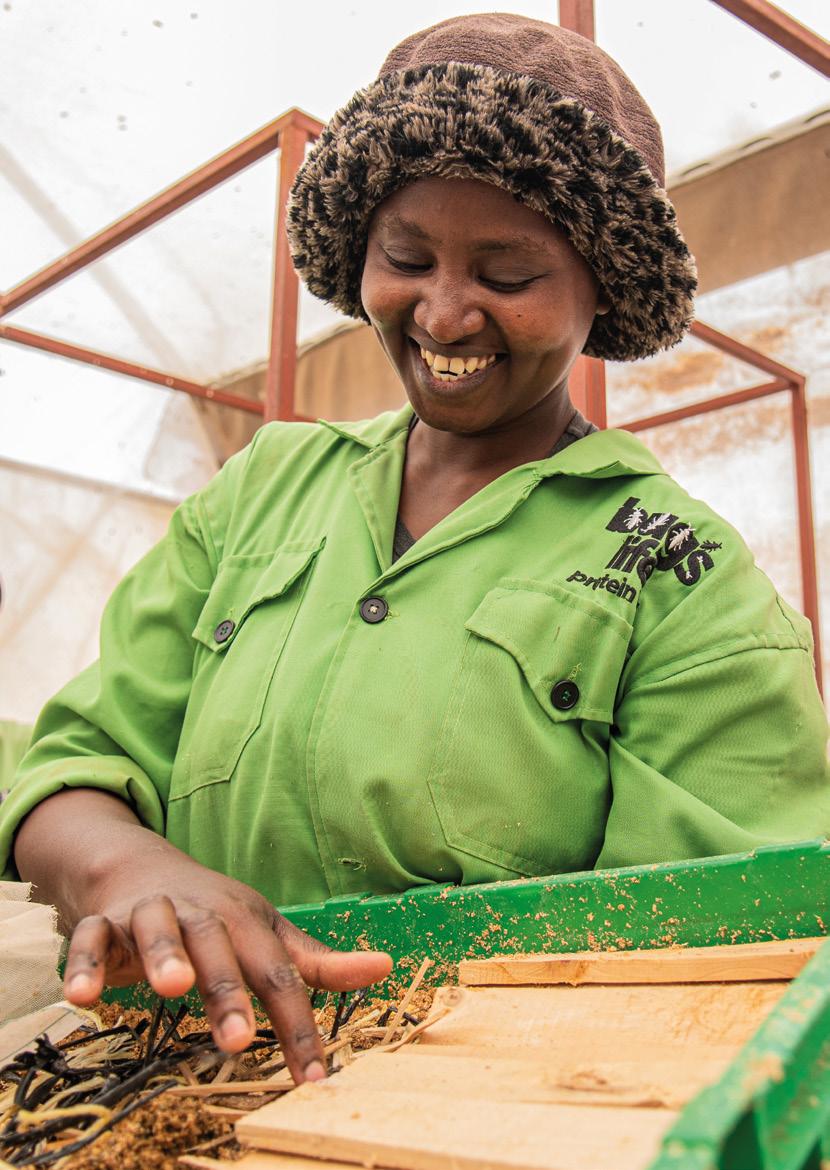 © Georgina Smith
© Georgina Smith
5
Innovative financing for inclusive value chains
5. Innovative financing for inclusive value chains
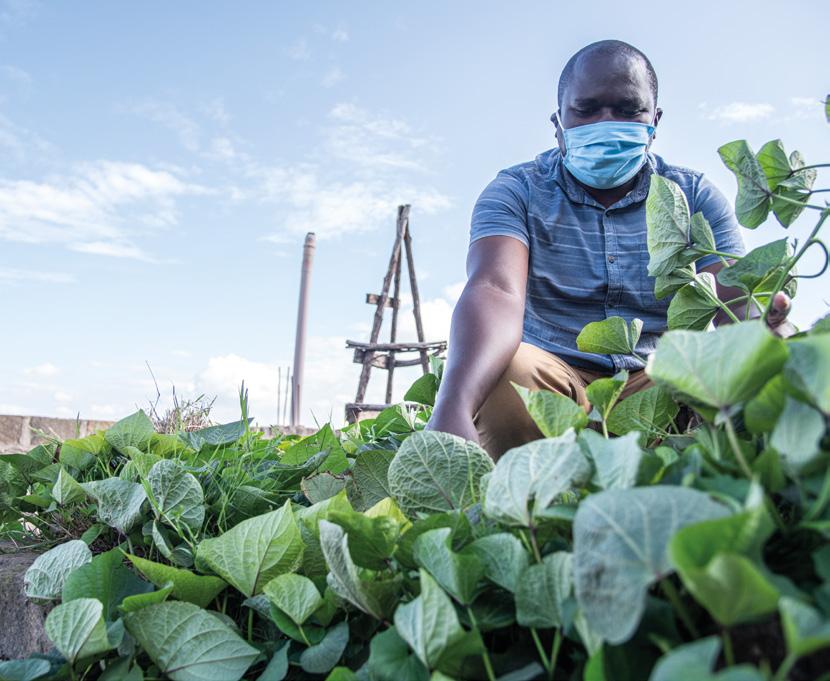
44 Enabling Resilient, Equitable and Sustainable Food Systems
© Georgina Smith
What did CultiAF do?
Innovative finance approaches – often bundled with other accompanying services and innovations – were a key aspect of several research projects during the second phase of CultiAF. Digital platforms and flexible loans were used by projects to enable the adoption of improved technologies and practices in the fish and bean value chains, as well as to support youth agri-entrepreneurship.
For instance, the Malawi Fisheries project partnered with FDH Bank Limited in Malawi to provide fish processors with flexible loans that did not require significant collateral and that considered external factors, such as seasonality in fish catch. The project also gave female fish processors a preferential reduced interest rate (2% lower) as part of its gender-empowerment strategy. Enabling access to finance was a key component that allowed the project to help men and women improve their livelihoods, as well as enhance the quality and profitability of fish and fish products.
The Precooked Beans project developed a digital platform in Kenya and Uganda through which farmers were paid for their produce directly. This ensured that all money earned by female farmers was received directly by them, without the transaction being detoured through their husbands and other male relatives. This system empowered women as autonomous business owners, enabling them to register business transactions in their names using their personal phone numbers with rights to independently access their profits. This was achieved by collaborating with Mastercard which provided the digital platforms for the project.
In Kenya, 53.4% of young people in the Youth Agripreneurs project struggled to access financial services due to lack of collateral –meaning most had to resort to using personal savings to provide the required start-up capital. The project found that women were even more likely than men to struggle with financial access due to their lack of collateral security (64.9%),
reduced post-harvest fish losses by over half compared to traditional open-air sun drying.
Youth Agripreneurs:
Monthly sales of trained entrepreneurs increased by over CAD 100/AUD 110 Malawi Fisheries: CAD 21,071/AUD 23,805 distributed in loans
Two standards were created to enhance fish marketing potential.
20 partners were engaged to scale out benefits.
Monthly sales of young entrepreneurs increased by over KSh10,600, thanks to the agribusiness training and mentorship program.
Over 490 new jobs were created through the youth-led enterprises.
US$16,000 was distributed in loans.
Female bean farmers increased their income by 70%.
Precooked Beans:
About 67% of the businesses launched in the program’s rst phase were women-owned, and in the second phase, more than half of the participants (53%) were women.
19,094 farmers were registered on the project’s digital payment system.
19,094 farmers registered on the project’s digital payment system
business records (57.8%), and limited awareness on sources of funding (57.3%). To increase their chances of accessing finance, the model followed in this project aimed to empower the youth through knowledge transfer and by providing a pathway for de-risking youth in access to finance. Working with 60 youths, Phase 1 of the project found that training and business counselling significantly enhanced youth participation and investment in agribusiness. And, in the scale-up phase, 1,200 youth were engaged with County Governments in Kenya to participate in a rigorous evaluation that sought to understand the impact of entrepreneurial training, mentorship, and financing on youth entrepreneurship development.
Similar to the Youth Agripreneurs project, the Youth Entrepreneurship Hub project in Phase 1 tested innovative business models to increase youth participation in the fish industry in Malawi and Zambia and the maize postharvest agribusiness sector in Zimbabwe. Like the Youth Agripreneurs project, this project also identified the lack of mentors as one constraint hindering young people from succeeding in
45
5. Innovative financing for inclusive value chains
their businesses. As such, 27 mentors were trained to support entrepreneurs who received seed funding.
Achievements
The Malawi Fisheries project helped small groups of fisherfolk access a financing product that enabled them to build improved fish processing technologies. Of the 60 applicants (25 women and 35 men), 18 (10 women and eight men) successfully had loans approved. Of these, six fish processors (three men, three women) received loans totaling CAD 21,071/AUD 23,805. The loans were primarily disbursed through the purchase of materials from trusted suppliers and payments to approved contractors. Through this process, the funds were used to construct six solar dryers, five smoking kilns, and two warehouses to store processed fish products.
The project also built the capacity of the fisherfolk to manage their businesses. Following training, they became more confident in applying for other opportunities, which enabled some of the loan beneficiaries to develop service-oriented businesses and create employment opportunities.
Financing provided in the form of materials, under a loan agreement with FDH Bank, allowed one young woman to construct a solar tent dryer, a fish smoking kiln, and a fish processing shelter to enhance product quality and improve shelflife. As a single mother, the young woman used the additional income to care for her child as well as pay for a diploma course at a local college.
The Precooked Beans project trained local farmers in good agronomic practices and improved financial management and linked them to seed suppliers of improved bean varieties. The project recruited and trained 52 Village Enterprise Agents – mostly youths (60%) – 15 of whom were provided with Android phones to use the Mastercard Farmer Network (MFN, now referred to as the Mastercard Farm Pass) app. The app comprises various functions, such as farmer registration, digital payments,
FISHING FOR FINANCE
One young man, Hamis Nyampesi, who was introduced to solar tent dryers in the first phase of CultiAF, was successful in obtaining a loan from FDH Bank during the second phase of the Malawi Fisheries project. Nyampesi used this capital to buy fish in bulk from a cooperative of 15 young women called Fishland Ladies. By employing the skills acquired through project training, the Fishland Ladies cooperative successfully applied for match funding of CAD 45,954/AUD 51,906 from the Malawi Government Agricultural Commercialisation Project.
This additional funding enabled the cooperative to employ over 20 people and acquire a boat, fishing gear, solar tent dryers, and other equipment. The cooperative became the largest supplier of processed fish for Nyampesi’s business. He stated: “Myself I can’t, but together we can.”
produce collection, service support requests, transport management, extension services, and linkages to financial institutions for credit. By the end of the project, 18,466 farmers (7,572 men and 10,894 women) had registered with the app and traded CAD 135,665/AUD 153,209 worth of beans through the platform.
The MFN app helps farmers establish a real-time financial history through digital records, which is useful for evaluating their credit worthiness. For example, Equity Bank used this information to extend credit to farmers for input acquisition. MFN also ensures that payment is sent directly to the supplier of the produce and, for the Precooked Beans project, helped estimate
46 Enabling Resilient, Equitable and Sustainable Food Systems
production and seed demands from historical data. The app improved farmer data integrity and created jobs as agents for 11 women and 16 men.
The Youth Agripreneurs training helped identify potential funders to provide financial products, such as recurring working capital loans, to the project beneficiaries. The agripreneurs were also linked with county governments and financing bodies such as the Agricultural Finance Corporation, Juhudi Kilimo, and the Kenya Women Microfinance Bank. The project team also engaged with UWEZO Fund – a Government of Kenya fund that supports businesses run by women, youth, and persons with disabilities – for future partnership. In addition, the Kenya Youth Agripreneurs in Nyandarua County were prioritized for funding under the Nyandarua County partnership with Equity Bank. As a result of this project and the
value chains
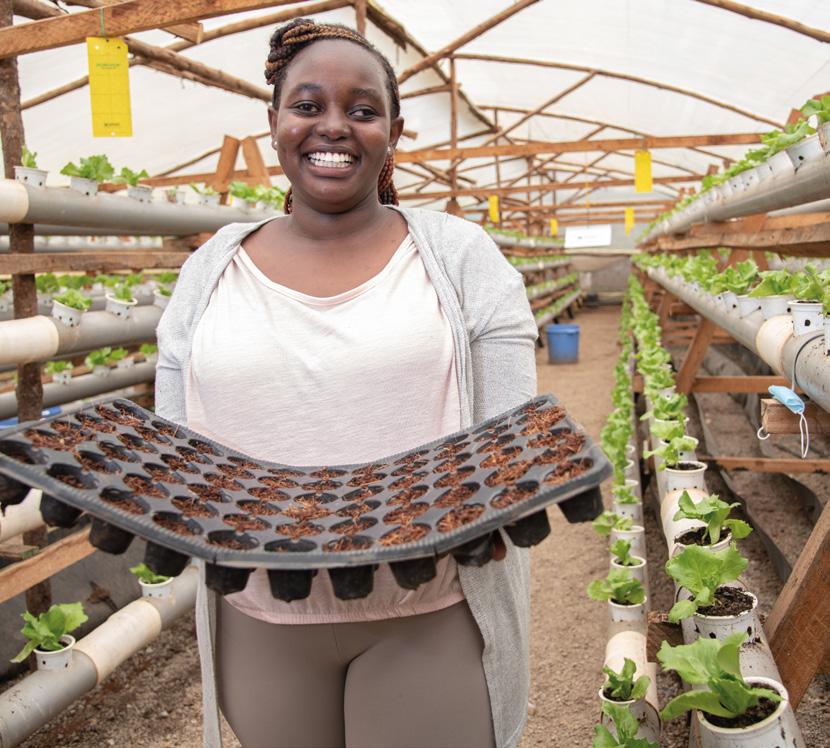
47
5. Innovative financing for inclusive
© Georgina Smith
“Standalone financing is not enough to scale agribusinesses. We must find strategies that will work for everyone.”
Prof. Francis Wambalaba, principal investigator, Youth Agripreneurs project
combination of mentoring and access to finance, youth appreciated agribusiness more, increased their monthly incomes through diversification and value addition, and were able to create employment for other youth. For example, combining training and mentorship increased monthly sales of youth enterprises by CAD 100/ AUD 110 on average, and enabled them to hire one extra employee. In addition, during the Covid-19 pandemic, trained entrepreneurs were more financially resilient and able to make shifts in product lines or remodel supply chains to mitigate against the shock.
In Phase 1, the Youth Entrepreneurship Hub project similarly revealed that combining business opportunity identification and entrepreneurship training alongside seed funding and mentoring, resulted in exponential

48 Enabling Resilient, Equitable and Sustainable Food Systems
© Malawi Fisheries Project
“If you have the knowledge, but no finance, you won’t make it.”
Roland Mwangi, Youth Agripreneurs project beneficiary
BEANS MEANS BUSINESS
One female bean farmer in Isingiro District, Uganda, benefited from using the MFN platform as a member and an agent for a local farming cooperative –Manyakabi Area Cooperative Enterprise (MACE). She mobilized over 150 farmers (including 120 women) – to grow the NAROBEAN 1 variety which was sold to MACE in bulk using the app.
She said: “MFN has eased my work, and most of it is now done using my smartphone instead of filling out papers. Now, I can register farmers and report expected harvests using MFN without having to travel to the MACE office in the hills of Isingiro District.” She also used her income from bean farming and agency work to start a piggery production business.
been rolled out earlier. The bank later assigned staff from its agribusiness section to work with the project and speed up the process. In addition, the number of loans disbursed was impacted by the requirement for beneficiaries to deposit an upfront commitment fee. The contributions varied depending on capacity; however, this requirement proved challenging for a number of individuals who had been successful in their initial applications. This is why fewer beneficiaries (six) received disbursements during the lifetime of the project than those who had successful applications (18 out of 60).
Expansion of the Malawi Fisheries financing initiative was also affected by the onset of Covid-19 and the subsequent lockdown restrictions. These disrupted project activities, including the gathering of fishers to increase awareness of the financing product.
growth for youth-led businesses. Results showed that about 80% of the supported business introduced their first or added new products; 70% reported establishing new partnerships; 50% increased clients; and 30% reported applying and/or accessing new sources of funding. About 60% of the funded businesses acquired new technologies and practices while another 30% expanded their existing businesses, including diversifying into new locations.
Challenges
The Malawi Fisheries project faced some challenges in negotiating a gender-responsive loan package with the private bank partner FDH. The bank was slow to respond during the initial stages of the project and delayed signing the project agreement. The project could have reached more people if the loan package had
The Covid-19 pandemic also caused the Youth Agripreneurs project to face challenges in engaging with banks. As banks changed their priorities or processes to contain the impacts of the pandemic, financing arrangements with the project were disrupted. The project team managed to use county government financing options instead, but this had less impact on the agribusinesses due to the smaller amounts they were able to loan. The team also acknowledged the importance of involving branch representatives of the financing institutions, and not just the head office, to ensure they are aware of the project and can coordinate effectively.
Conclusions
Financing was a key challenge faced by most of the CultiAF projects; not just the availability of credit or money to purchase and access technologies, but the combination of access to finance, business skills, and de-risking of farmers. It is not just about throwing money at the challenge: the key is to think about the business modules – including training and mentoring – that can make financing more accessible to users for greater impact.
Innovative financing for inclusive value chains
49
5.
value chain – rather than having them only focus on money. Youths should also be encouraged to come together to establish group savings accounts to enable them to apply for finance as a formal entity or a registered group and negotiate for essential resources, such as farming inputs.
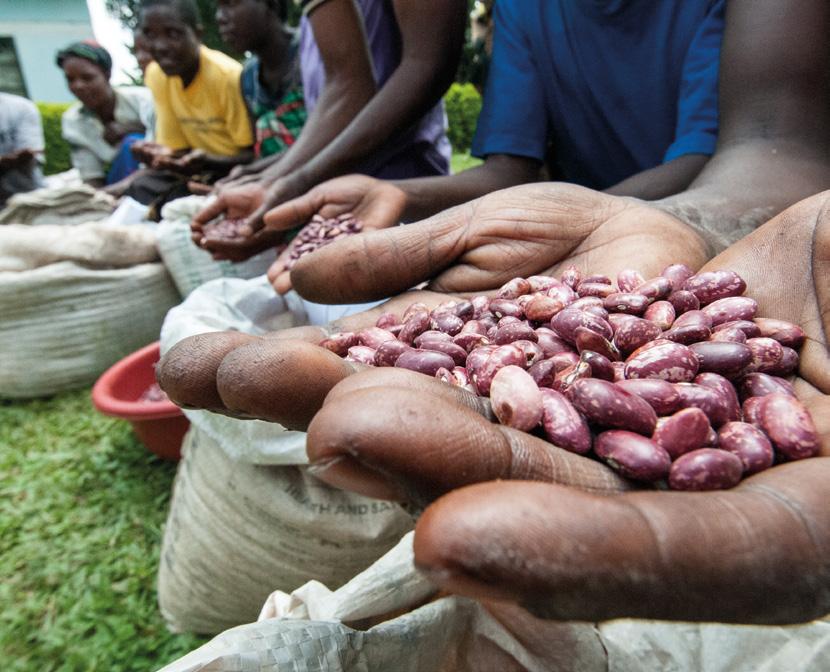
The Youth Agripreneurs project also emphasized that smaller microfinance organizations have community connections, better understand challenges faced by small agripreneurs, and can provide technical support to young entrepreneurs. Targeting these local financial institutions/savings associations as partners, rather than national banks, may therefore be more effective in providing finance to small businesses, especially for women who may not have collateral to access bank loans.
Fisheries project. However, it is important to first identify market opportunities and then seek sources of finance.
Beneficiaries (including women and youth) need to be trained on how to apply for loans and other financial services; they often lack knowledge and skills for how to access and apply for finance. Thus, it is important that technical assistance is made available to agripreneurs to help them achieve bankable businesses and be ready for financing or financial linkages.
It is important to publicize a project’s work to attract other financial stakeholders who might be interested in its services or products, as this builds investment cases for others to contribute to the project work or scale-up the innovations.
50 Enabling Resilient, Equitable and Sustainable Food Systems
© CIAT/Georgina Smith
 © Georgina Smith
© Georgina Smith
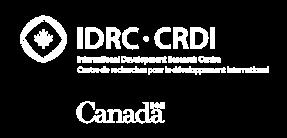
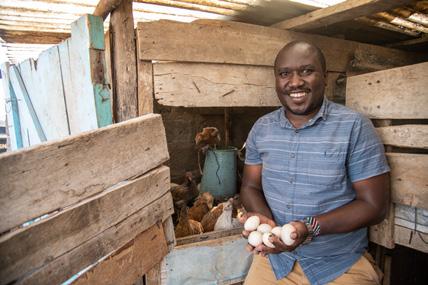


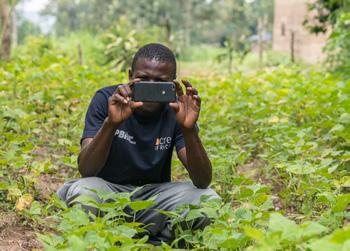
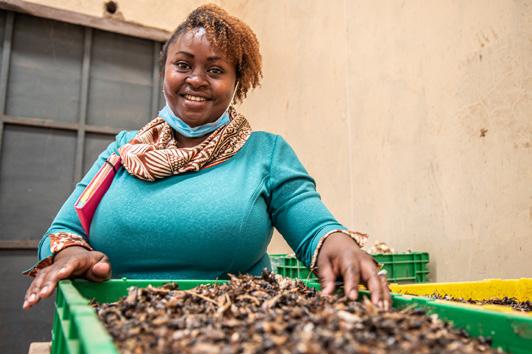


 © Georgina Smith
© Georgina Smith



 © Georgina Smith
© Georgina Smith




















 © Georgina Smith
© Georgina Smith




 © Georgina Smith
© Georgina Smith

